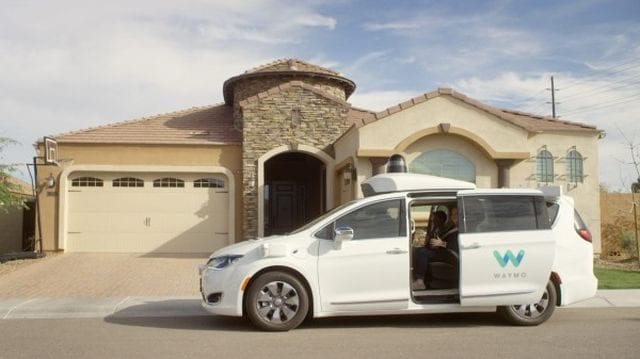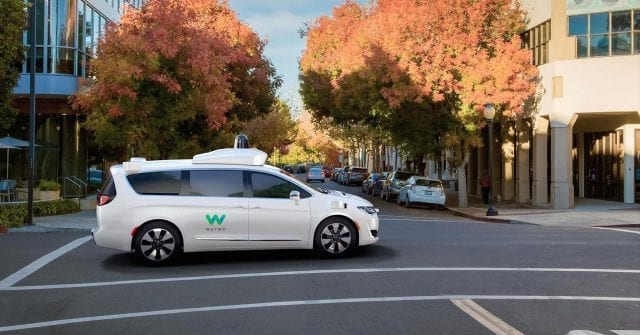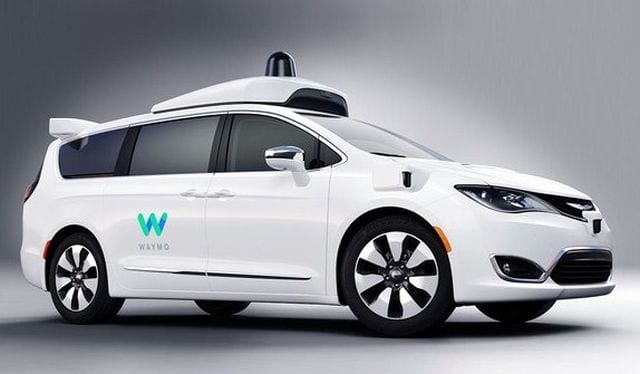After almost eight years and millions of test miles, Google is finally ready to let passengers into their self-driving cars!
How can you book a free ride? Through ‘Waymo’ a company developed by Google which will start taking your applications on Tuesday (for Phoenix area only). If you want to be among the few hundreds of riders that will test the Chrysler Pacifica Plug-In Hybrid minivan, you’ll have to do it that way.
The concept of self-driving cars became so popular that we had numerous claims of companies such as Toyota, Ford, General Motors, Nissan, BMW and Volvo that they will start producing self-driving cars as early as 2024.

However, Waymo’s Arizona initiative is certainly at least one step ahead. The company licensed its hardware and software to future ride-hailing companies, and Waymo can, therefore, expect its multi-year investment to result in the elimination of one of the essential parts of cars today- the driver. There is no doubt that this was a phenomenal move.
John Krafcik, CEO of Waymo said: ‘I’d say our business model on this is TBD (to be determined), and the most important thing that’s going on here is learning more about how people would actually use such a service.’ He then went on to add: ‘It’s our first interaction with real people in our cars.’ He finished his statement with the claim that this was a huge step for him and his company.
According to Arizona laws, self-driving cars don’t need to have actual humans at the wheel when tested for safety, however, the test vehicles will have at least one Waymo employee in the beginning. Their main purpose is to gather info about the way that people use their rides, and no driving will be done by those employees.
Prior to Waymo, Uber tried out the self-driving car concept the last summer in Pittsburgh. But the scope of Waymo’s pilot program seems to be wider. By that we mean that it has a larger number of autonomous cars picking up passengers and also a better use-case detailing which Waymo wants to compile on riders.
The bottom line is to make potential users feel relaxed about ‘robots’ at the wheel. That is one of the company’s main goals when it comes to the new program. This claim was confirmed by Michelle Krebs (executive analyst at Autotrader). She said: ‘According to (Autotrader employee) Kelley Blue Book research, the key to acceptance (of self-driving cars) is exposure and education.’ She also added: ‘It’s smart for Waymo to invite the public to take its self-driving Chrysler Pacifica Hybrid minivans for a spin to build confidence in their technology.’
This broadened program will utilize 600 self-driving Chrysler Pacifica which is a gigantic increase when we remember that only 100 of them were delivered last year (courtesy of partner Fiat Chrysler Automobiles). On the Krafick’s blog post we found instructions on how to sign up for the Phoenix program which will debut after a few months of tests.
The next month we expect another additional 500 custom vehicles which will be later equipped with sensors. This claim was made by FCA CEO Sergio Marchionne. He added: ‘The collaboration between FCA and Waymo has been advantageous for both companies as we continue to work together to fully understand the steps needed to bring self-driving vehicles to market.’

Krafcik also stated that the selected participants will be advised to solely rely on the company and self-driving program for everything they will need during the transportation process. That also includes daily commutes and weekend trips to stadium or cafes. One of the aims of Waymo is to find a diverse set of participants, to be precise ‘hundreds of riders’ that are to be accommodated with the Pacifica program. Krafcik also added that those who will be selected for the Phoenix test won’t have to pay for the rides. A win-win situation for all.
The reason why Phoenix was selected was that it is a city and a market where most of the people are car-dependent. Other than that, Waymo has been testing out their product in other cities such as Mountain View, Cali., Wash, Kirkland and Austin.
Prior to these tests, Google has been doing a lot on radar, LiDAR sensors and camera perfecting. They used Lexus SUVs for those tests. But in 2015 Google designed a small two-person car which quietly roamed Google’s headquarters and slowly it spread to other ‘test cities.’
In 2016 Chrysler delivered 100 Pacifica upon the request of Google, it all culminated when another 500 were ordered which are set to join their siblings soon.
But the journey of this company and their self-driving car wasn’t perfect. It had experienced a few bumps on the road. For example, Chris Urmson, the head of Google’s self-driving car project left the company last summer only to surface again later as an owner of a new self-driving company. Unfortunately, we have almost no details about his new endeavor.
After that Waymo sued Uber (that happened two or three months ago) with the claim that Uber stole the LiDAR technology from them. Uber used it without their consent when a company named ‘Otto’ (self-driving trucks) utilized that technology. Oh yes, Otto is owned by Uber just to clear things up. All of that happened while the Otto founder, Anthony Levandowski was still at his desk working there.









